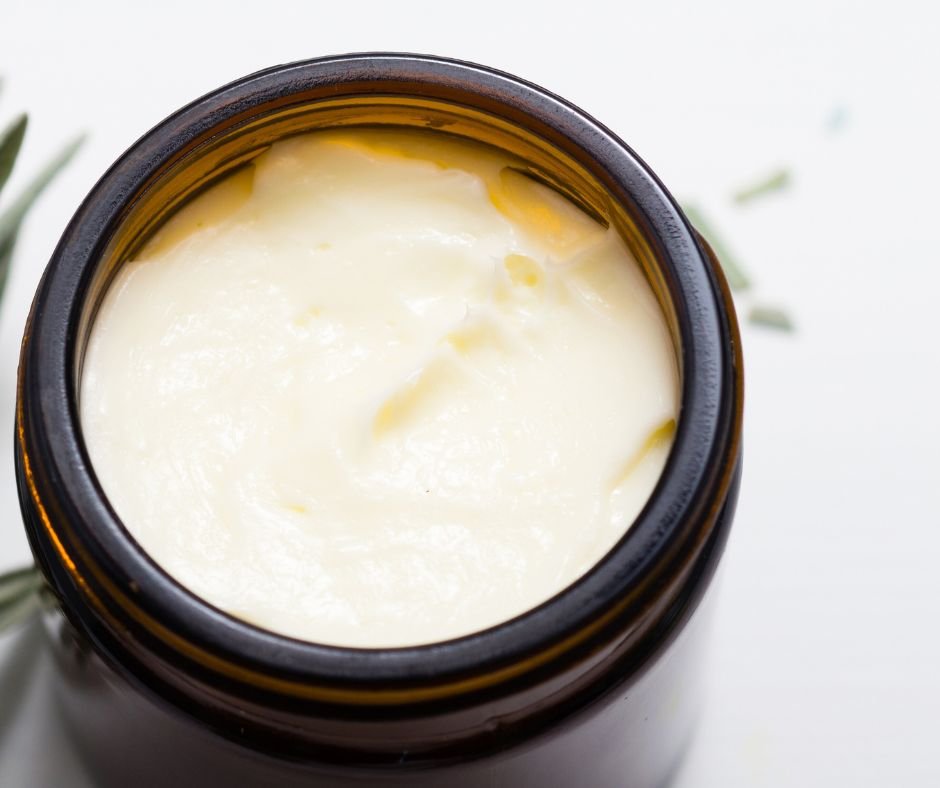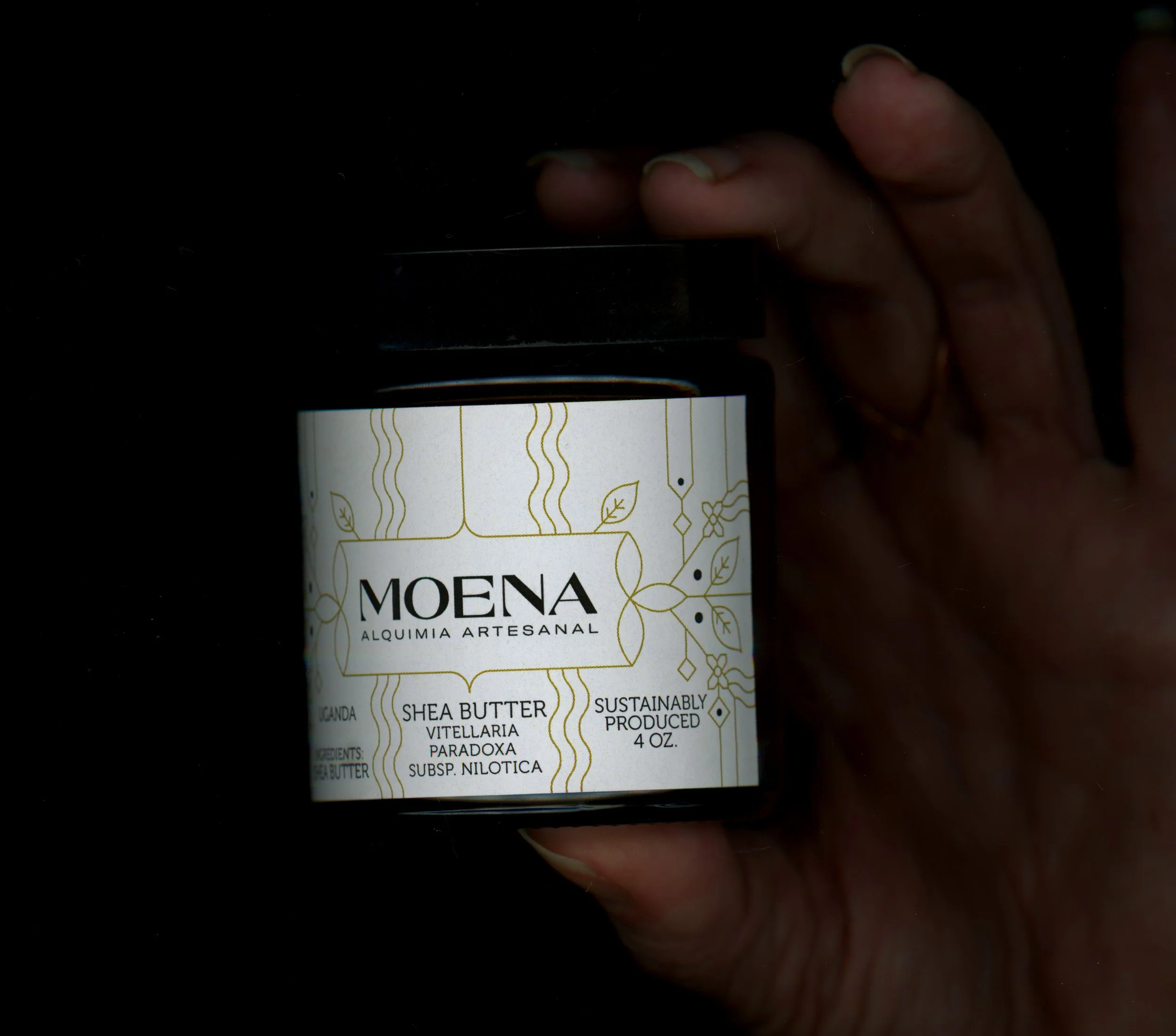Scent Description: A light shea butter with a neutral, mildly nutty aroma.
Botanical Name: Vitellaria paradoxa subsp. nilotica
Origin: Lira, Uganda
Method of Extraction: Cold-pressed from seeds.
Benefits and Properties: Shea butter has been used for millennia for healing and maintaining healthy skin and hair. Nilotica shea, endemic to East Africa, is creamier and less firm at room temperature, as well as less yellow in color, than West African shea, and is considered of superior qualtity. Nilotica shea butter is also edible, and is used as a savory flavoring on beans in Northern Uganda.
Moisturizing: Nilotica shea butter is rich in fatty acids and vitamins that help to moisturize and nourish the skin. It can help to restore the skin's natural barrier, preventing moisture loss and leaving the skin feeling soft and supple.
Anti-inflammatory: Nilotica shea butter has anti-inflammatory properties that can help to soothe and calm irritated or inflamed skin. It may be helpful in conditions such as eczema, psoriasis, and dermatitis.
Anti-aging: Nilotica shea butter contains antioxidants that can help to protect the skin from damage caused by free radicals, which can contribute to premature aging. It may help to reduce the appearance of fine lines and wrinkles, and promote a more youthful-looking complexion.
Healing: Nilotica shea butter has been used for centuries in traditional medicine to treat a variety of skin conditions, including burns, cuts, and scars. It may help to promote healing and reduce the appearance of scars and blemishes.
Sun protection: Nilotica shea butter contains natural sun protection factors that can help to protect the skin from the harmful effects of the sun's UV rays. While it is not a replacement for traditional sunscreens, it may help to provide additional protection when used in conjunction with them.
How to Use:
Scoop out a small amount of Nilotica shea butter from the container using clean hands or a spatula.
Rub the shea butter between your palms to warm it up and soften it. This will make it easier to spread on your skin.
Apply the melted shea butter to your body, focusing on areas that require extra hydration, such as elbows, knees, and heels. Massage it gently into your skin using circular motions.
Allow the shea butter to absorb into your skin for a few minutes before dressing to prevent any transfer of the butter onto your clothes.
For best results, use the shea butter after showering or bathing when your skin is still slightly damp. This will help lock in moisture and maximize the benefits of the shea butter.
Feel free to customize your shea butter by adding a few drops of your favorite essential oil or blending it with other natural oils like coconut oil or jojoba oil for added fragrance and benefits.
Use the Nilotica shea butter daily or as needed to keep your skin hydrated, soft, and supple.
Remember, everyone's skin is unique, so adjust the amount of shea butter based on your skin's needs. Enjoy the luxurious feel and nourishing effects of Nilotica shea as it works its magic on your skin.
About the Plant: The Nilotica shea plant (Vitellaria paradoxa subsp. nilotica) is a large, deciduous tree that can reach impressive heights of up to 25 meters and diameters of 2 meters. It is primarily found in the dry savannah belt across the northern regions of sub-Saharan Africa. This includes countries such as Senegal in the west and South Sudan in the east. What makes the Nilotica shea particularly unique is that it is a distinct subspecies that is exclusively found in East Africa, specifically in countries like Uganda and South Sudan. These areas are known for their vast savannah landscapes, where the Nilotica shea trees gracefully emerge from the surrounding grasses.
However, the Nilotica shea trees face significant challenges due to their high commercial value. One of the main threats to their survival is the demand for charcoal. The wood of shea trees is prized for its quality and is used extensively as a source of charcoal, which contributes to deforestation and the loss of these magnificent trees.
Native range: The native range of the Nilotica shea plant (Vitellaria paradoxa subsp. nilotica) is primarily East Africa, specifically countries like Uganda and South Sudan. This distinct subspecies is found exclusively in this region, where it thrives in the dry savannah belt. The Nilotica shea tree is commonly seen emerging from the grasses of the East African savannah, showcasing its adaptability to the local environment. It is important to note that the Nilotica shea's native range is geographically restricted to East Africa, setting it apart from other shea tree species found in different parts of sub-Saharan Africa.
Description: The shea tree is a medium-sized deciduous tree that can grow up to 20 meters tall. It has a wide, spreading crown and rough, dark brown bark. The leaves are green, alternate, and pinnate, and the flowers are small, white, and fragrant. The fruit is a large, green, egg-shaped drupe that contains a nut that is rich in shea butter.
Cultivation: Shea trees grow in tropical regions and prefer well-drained soils. They are propagated by seeds, which should be sown in a well-drained soil mixture and kept moist until germination. Shea trees are slow-growing and can take up to 20 years to produce nuts that contain shea butter. They are often grown in agroforestry systems, where they are intercropped with other crops to provide shade and improve soil fertility.
Conservation status: The shea tree is not currently listed as a threatened or endangered species. However, over-harvesting of the nuts for shea butter production can have negative impacts on the tree population and local communities that rely on the nuts for food and income. It is important to use sustainable harvesting practices and support conservation efforts to ensure the continued survival of this important tree species.









